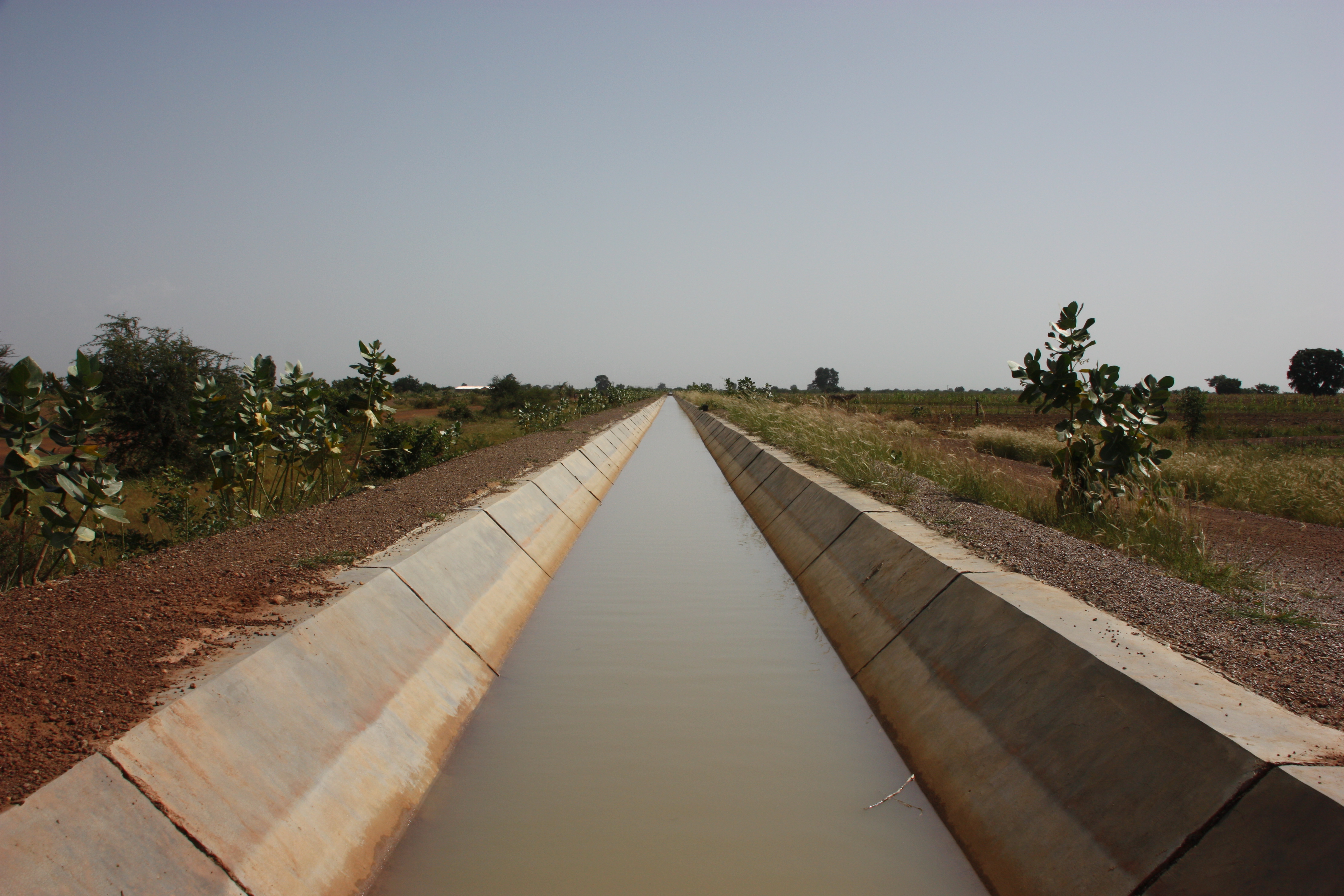Program Overview
MCC’s $480.9 million Burkina Faso Compact (2009-2014) included the Water Management and Irrigation Activity ($103.9 million). Its aim was to ensure adequate water availability and supply for beneficiaries, notably through the construction of a 2,240-hectare irrigated perimeter in the Di Department, support for improved water resource management, and provision of land titles and leases to recipients of irrigated land in Di (under the Rural Land Governance Project). These investments were expected to sustainably increase yields, agriculture profits and household incomes.Download French translation of the Burkina Faso Irrigation Evaluation Brief
Evaluator Description
MCC commissioned Mathematica Policy Research to conduct independent interim impact and performance evaluations of the Water Management and Irrigation Activity. Full report results and learning: https://data.mcc.gov/evaluations/index.php/catalog/198.
Key Findings
Implementation Quality and Timeliness
- Stakeholders valued the irrigation infrastructure and technical assistance.
- Due to implementation delays, the Government of Burkina Faso provided technical assistance after the compact’s end.
Agricultural Outcomes
- Project-Affected Persons (PAPs) reported considerable increases in agricultural yields compared to before the irrigation infrastructure was completed. However, yields did not meet the project’s targets.
- Perimeter yields may decrease in future years given low application rates of organic fertilizer.
Land Tenure Security and Well-Being
- PAPs reported improvements in their land tenure security and food security.
Sustainable Irrigation and Water Resources Management
- Integrated water resource management institutions are fulfilling their core functions, but are constrained by insufficient capacity and funding.
- Local water committees are playing an important role in resolving water conflicts.
- Declining payment of water user fees in sectors with rice plots raise doubts about the Di perimeter’s financial sustainability. These payment issues are likely related to rice production’s lower profit margin compared to polyculture plots growing mainly higher value crops such as onions, tomatoes, and maize.
Evaluation Questions
This interim evaluation was designed to answer the following questions that will inform the final evaluation:- 1 Were project activities and investments implemented as planned?
- 2 What were agricultural outcomes on the perimeter?
- 3 How did land security and well-being change for PAPs?
- 4 Are the infrastructure and the basin water resources of the Di perimeter sustainably managed?
Detailed Findings
Implementation Quality and Timeliness
Stakeholders considered the quality of the irrigation infrastructure and capacity building to be high, despite minor issues with leveling fields. Delays with the irrigated perimeter affected land allocation and technical assistance delivery. The Government of Burkina Faso oversaw technical assistance to farmers and water users after the compact. Nearly all PAPs received financial compensation, land, ownership and leasehold documents, training, and starter kits. Large farmers did not consider the land they received to be enough compensation for the land they lost. Small farmers did not express this concern. Some interviewees reported that women had been overlooked in the land registration process and excluded from perimeter land allocations.Agricultural Outcomes
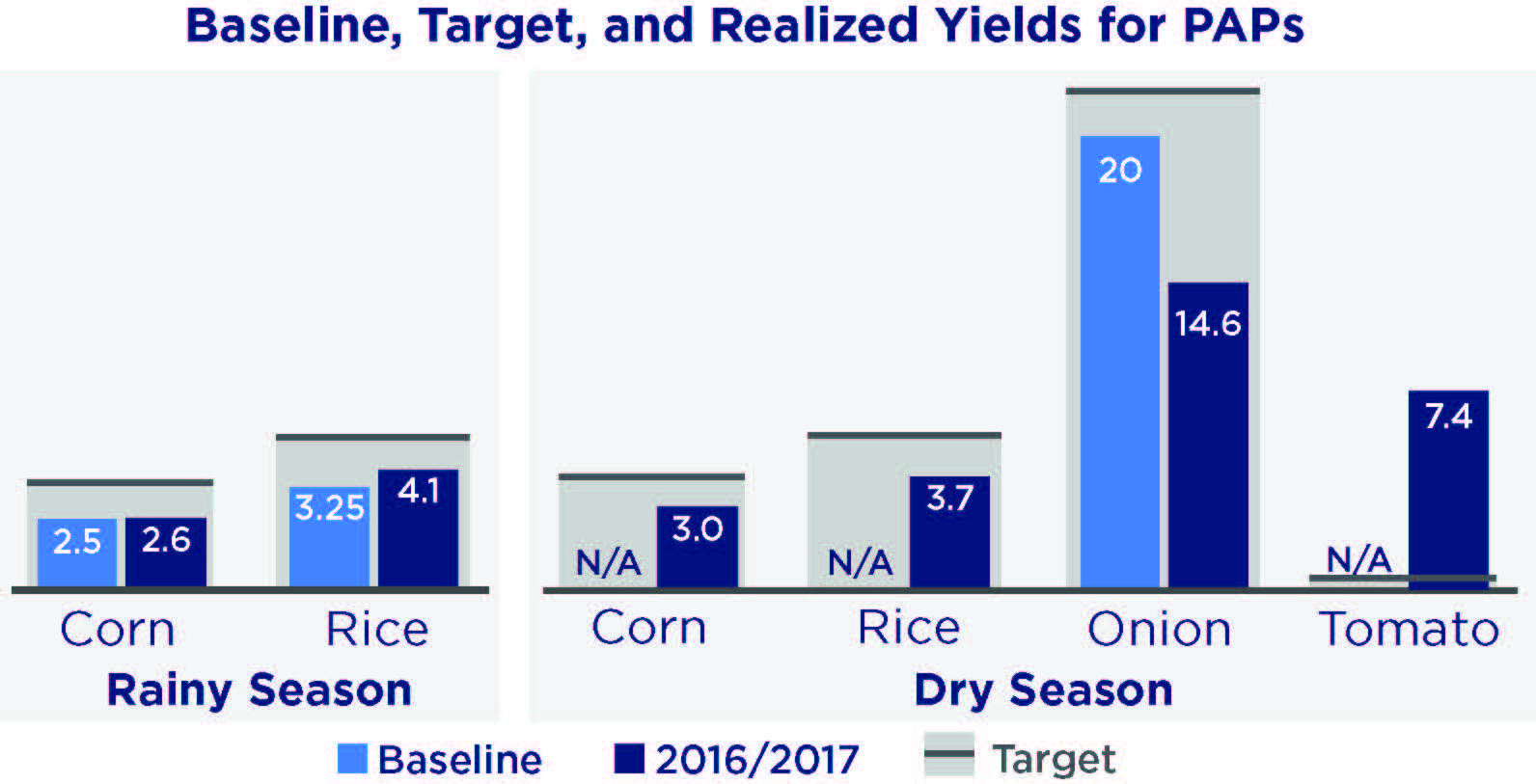
Land Tenure Security and Well-Being
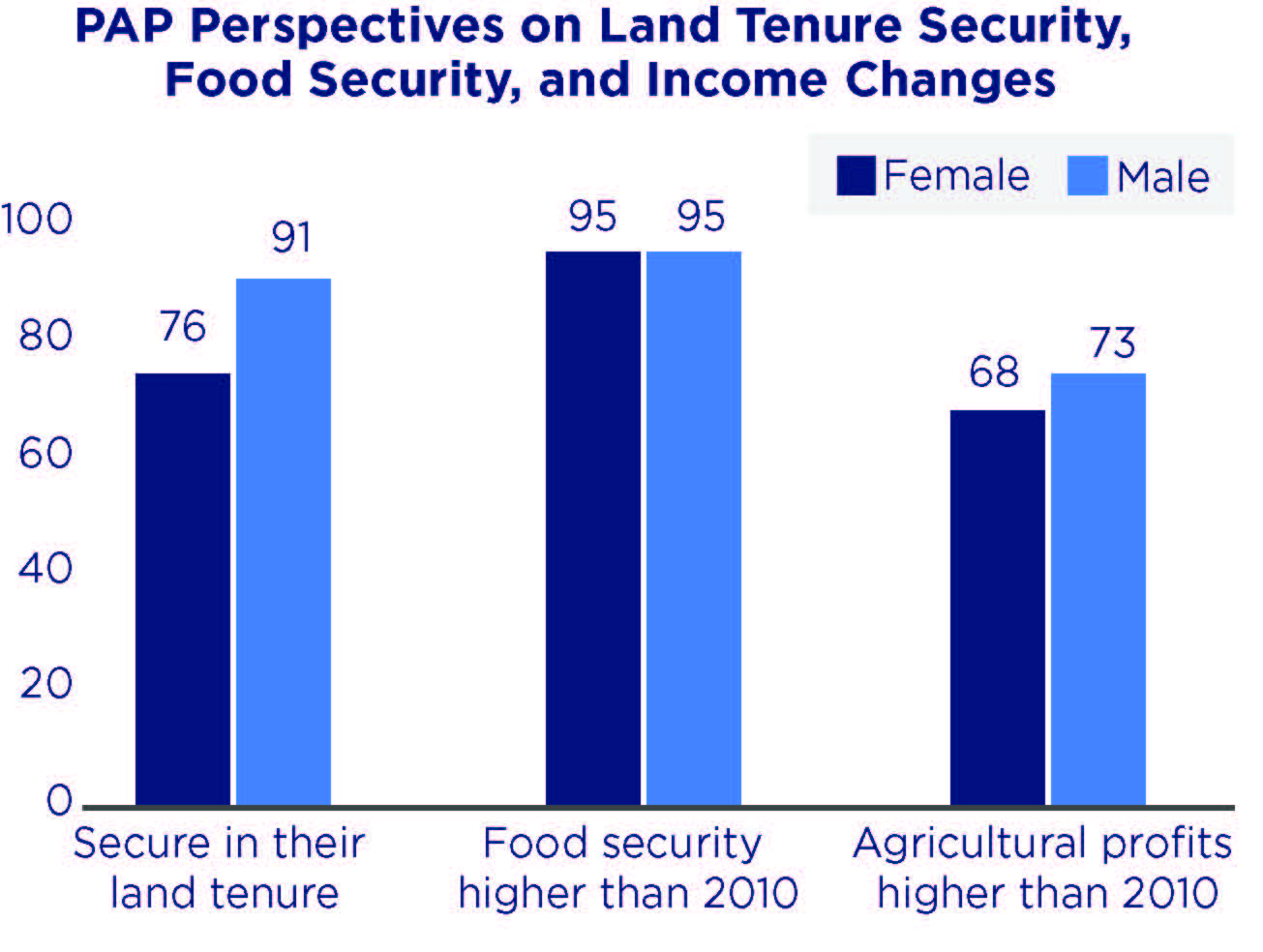
Sustainable Irrigation and Water Resources Management
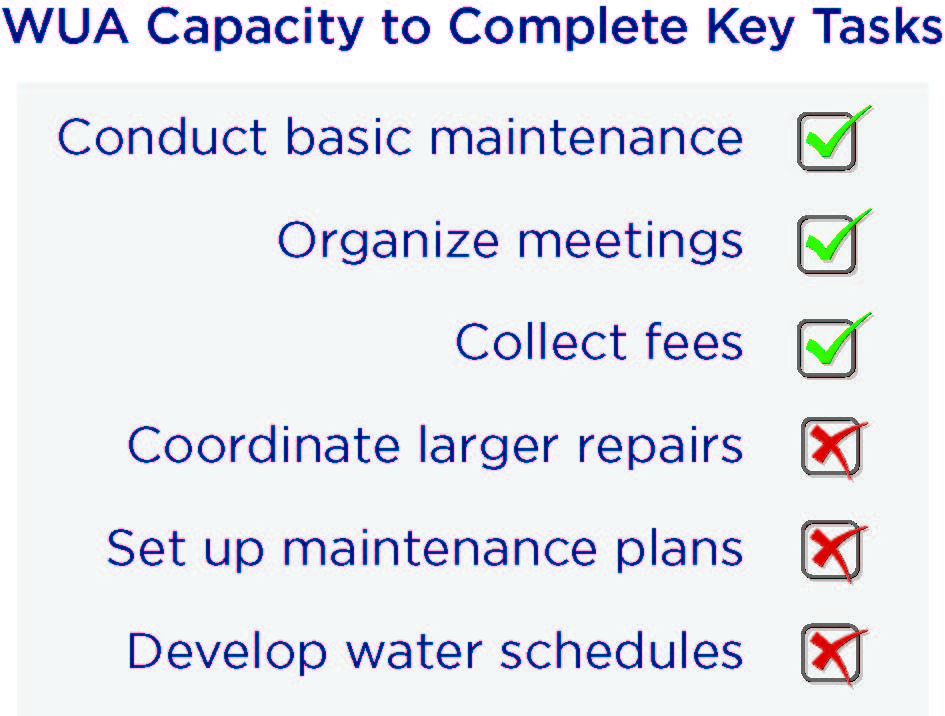
While four sectors of the perimeter with mostly polyculture plots collect the vast majority of WUA fees, two sectors mostly suitable for rice cultivation have rapidly declining payment rates. WUA fees for rice plots—which need more water but are less profitable—may not be set at a level that can be borne by farmers cultivating rice.
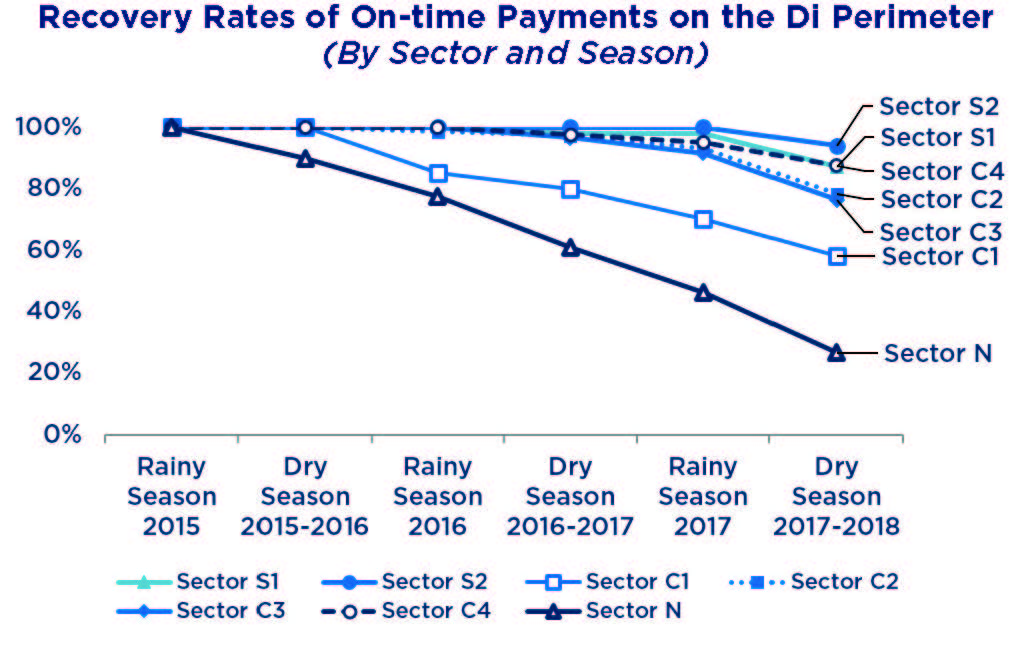
The two water basin committees adopted five-year implementation plans to operationalize the basin management plans developed and validated during the compact. Local actors are using the hydrological models to plan agriculture and irrigation investments according to the availability of water resources.
MCC Learning
- MCC should engage in institutional reform and capacity development efforts earlier in the project life cycle and more substantially. To improve long-term sustainability, MCC should also find opportunities to build on existing institutions when creating WUAs.
- Organizational- and system-level capacity often influence whether a project achieves and sustains desired outcomes. Once defined, project logic results related to developing local capacity should be measured before, during, and after project implementation.
- An increase in agricultural yields may not necessarily lead to an increase in agricultural profits, because of higher input costs and price decreases.
- Evaluations should consider using remote sensing and geospatial analysis to provide more credible and precise estimates of changes in land use and agricultural production.
Evaluation Methods
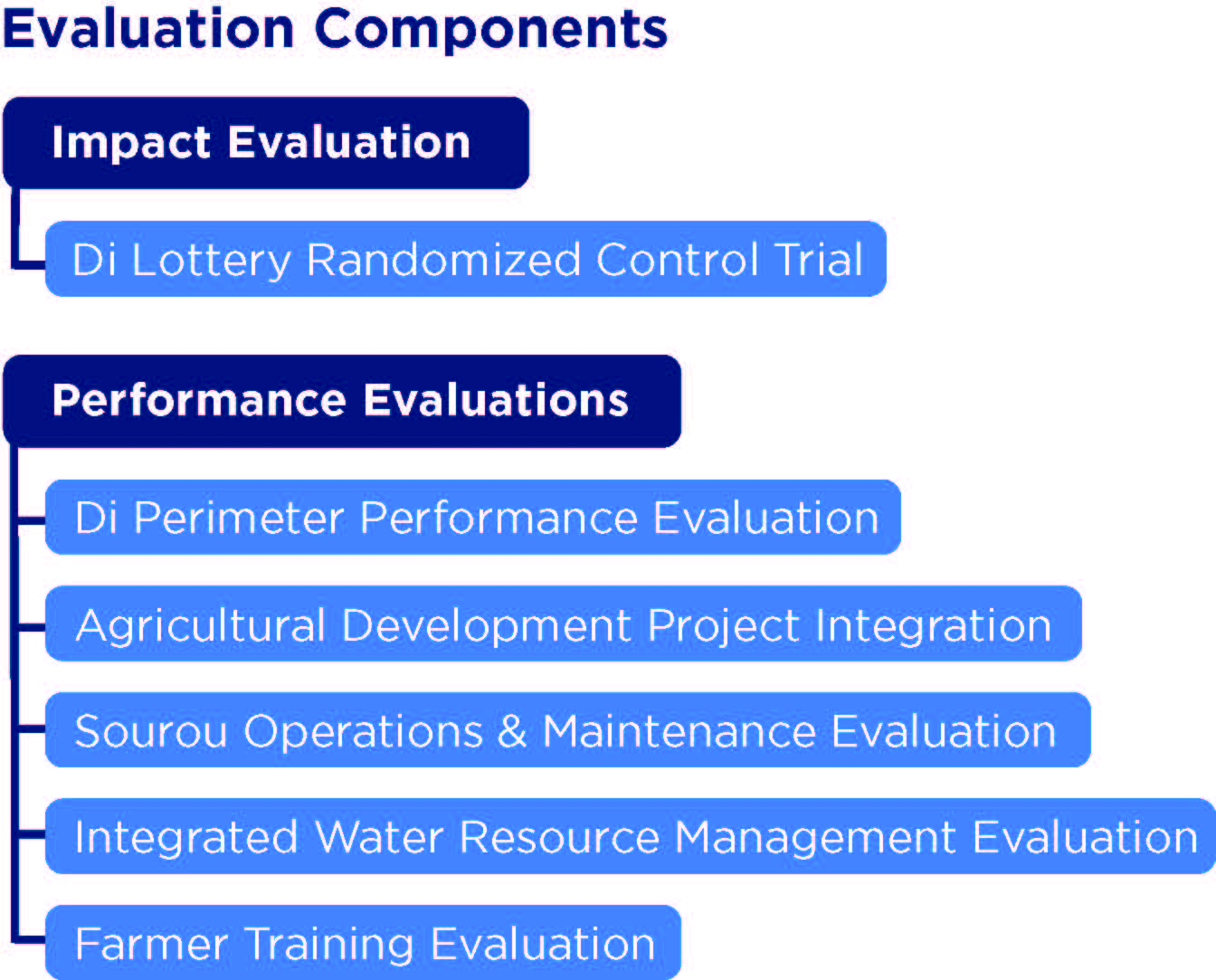
This interim analysis is based on five main data sources: (1) quantitative surveys with 266 PAPs and 2,078 Di Lottery applicants; (2) qualitative data gathered from 16 focus group discussions and 60 in-depth interviews with stakeholders, including PAPs, PAPs’ spouses, WUA representatives, and project implementers; (3) administrative data on land allocation and compensation; (4) data from the market information system (Agridata/Ecodata); and (5) administrative data on water user association payment rates.
Data collection occurred from January-April 2018 and covered the 2016/2017 dry season and the 2017 rainy season. PAPs’ exposure to program support at the time of data collection was between 3.5 and 4.5 years after the perimeter was operational, at least 2.5 years after the end of training. Since the perimeter’s seven sectors were completed at different times, PAPs’ receipt of land and other benefits was staggered. PAPs were allocated land between April 2013 and March 2014 and training continued into the 2014/2015 dry season.
Next Steps
A final impact and performance evaluation is underway, and results are expected in 2020.2019-002-2271


